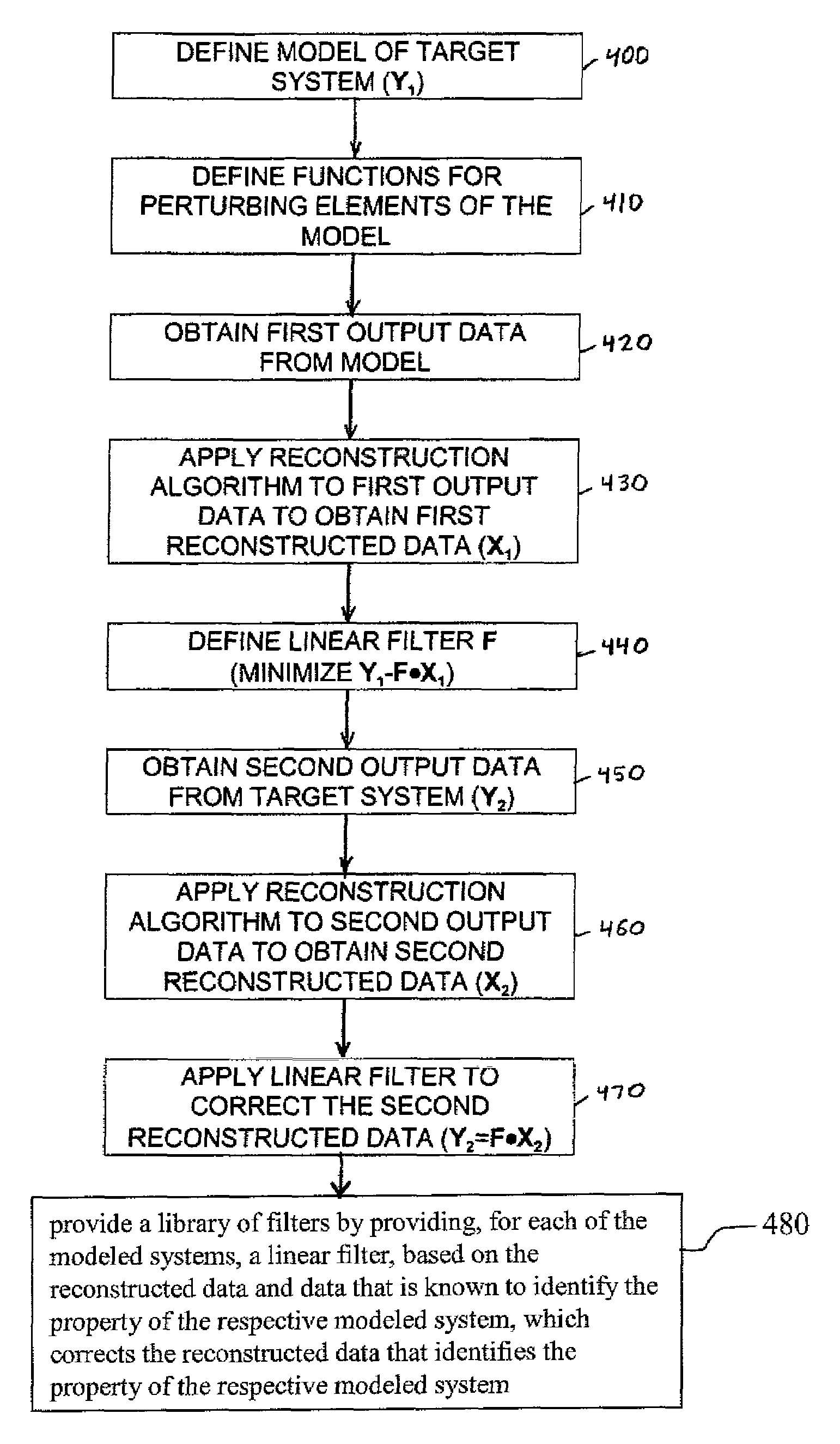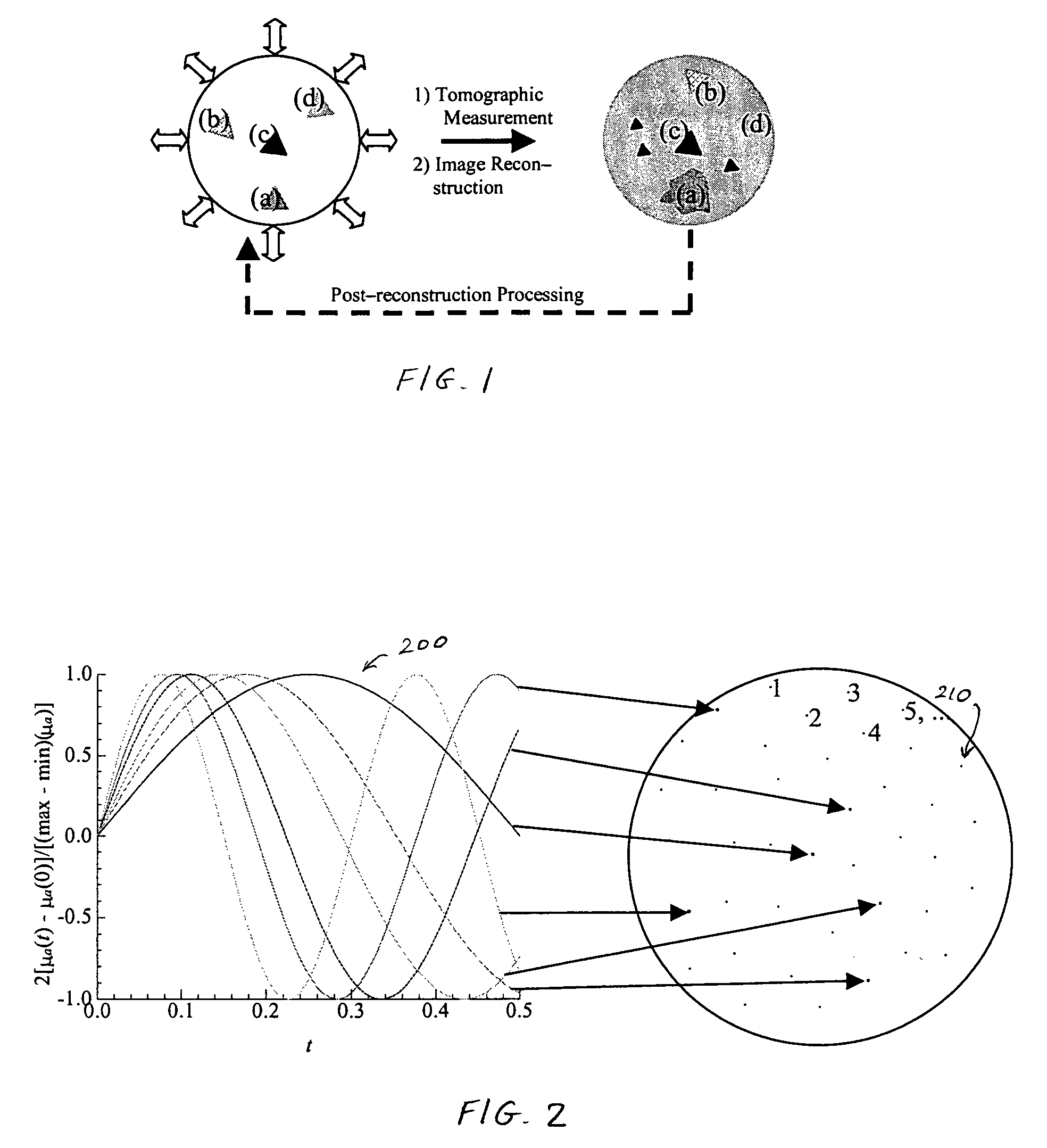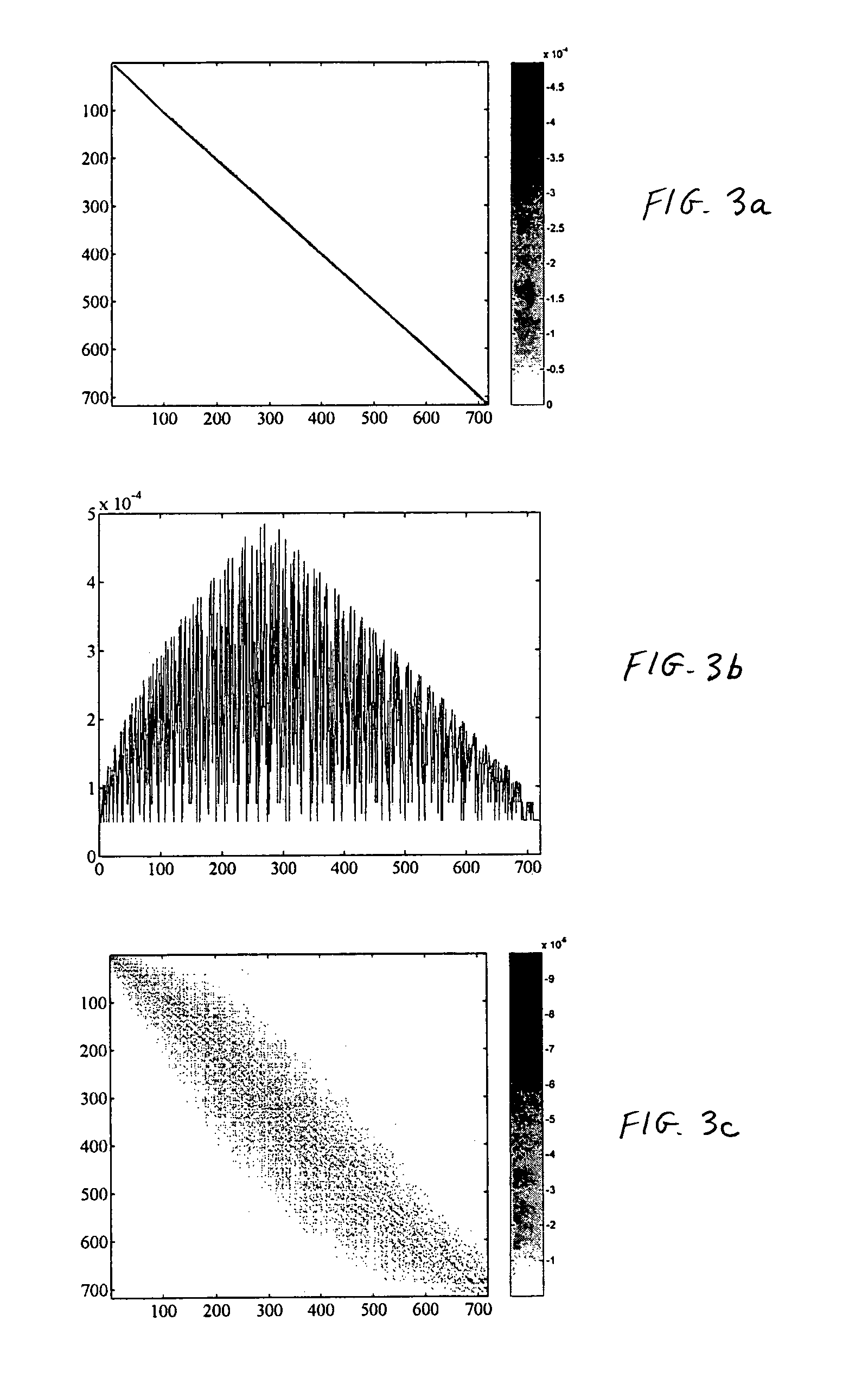Image enhancement by spatial linear deconvolution
a spatial linear deconvolution and enhancement technology, applied in image enhancement, instruments, analogue processes for specific applications, etc., can solve the problem of quite significant computation cos
- Summary
- Abstract
- Description
- Claims
- Application Information
AI Technical Summary
Benefits of technology
Problems solved by technology
Method used
Image
Examples
example imaging
[0049]FIG. 6 illustrates an example imaging system, shown generally at 600. A system providing high speed data capture of one or more wavelengths simultaneously from a target medium using optical tomography is disclosed in PCT publication WO 01 / 020306, published Mar. 22, 2001, and entitled “System And Method For Tomographic Imaging Of Dynamic Properties Of A Scattering Medium”, incorporated herein by reference. This system is capable of capturing multiple wavelength data at rates up to 150 Hz and enables the reconstruction of cross-sectional images of real-time events associated with vascular reactivity in a variety of tissue structures (e.g., limbs, breast, head and neck). Fast data collection methods are particularly useful because there are many disease states with specific influences on the spatial-dynamic properties of vascular responses in hemoglobin states.
[0050]The system 600 includes a computer control and data storage component 602. This component can be provided by ...
PUM
 Login to View More
Login to View More Abstract
Description
Claims
Application Information
 Login to View More
Login to View More - R&D
- Intellectual Property
- Life Sciences
- Materials
- Tech Scout
- Unparalleled Data Quality
- Higher Quality Content
- 60% Fewer Hallucinations
Browse by: Latest US Patents, China's latest patents, Technical Efficacy Thesaurus, Application Domain, Technology Topic, Popular Technical Reports.
© 2025 PatSnap. All rights reserved.Legal|Privacy policy|Modern Slavery Act Transparency Statement|Sitemap|About US| Contact US: help@patsnap.com



